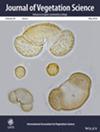Beyond Single Invaders: Disentangling the Effects of Co-Invading Alien Forbs on Sandy Old-Fields
Abstract
Aims
Invasive alien plants can severely impact ecosystem diversity and function. While the effects of individual species are often studied, interactions between multiple invasive species are less understood. This study examines how Asclepias syriaca and Solidago spp. (including Solidago gigantea and S. canadensis) influence taxonomic and functional diversity in sandy old-fields. The aims are to: (1) assess the individual and combined impacts of Asclepias and Solidago on resident plant diversity and (2) determine whether interactions between these species alter their effects on the invaded community.
Location
Gödöllő Hills, Central Hungary.
Methods
I sampled 80 plots (2 m × 2 m) on sandy old-fields with varying levels of Asclepias and Solidago cover. Plant species cover was visually estimated, and trait data were obtained from databases. Species richness, community completeness, and community-weighted means (CWM) for plant traits, along with Rao functional diversity, were analyzed. Generalized linear and mixed models were used to evaluate the effect of invasive cover on resident diversity and traits, both with and without considering the invasives' traits in community indices.
Results
While Asclepias had no significant effect, Solidago cover significantly reduced species richness and community completeness. When invasive species traits were excluded from the analysis, only the CWM and Rao's diversity of the bud bank index were significantly related to Solidago cover. Including the invasives' traits revealed that their trait values influenced community indices significantly. Asclepias and Solidago cover were negatively correlated, but did not alter each other's effects.
Conclusions
Solidago has a stronger negative impact on resident species richness than Asclepias, which appears neutral. Trait-based mechanisms underlying reduced species richness under Solidago dominance require further investigation. The lack of interaction between these invaders suggests their individual impacts dominate over potential synergies or antagonisms.


 求助内容:
求助内容: 应助结果提醒方式:
应助结果提醒方式:


